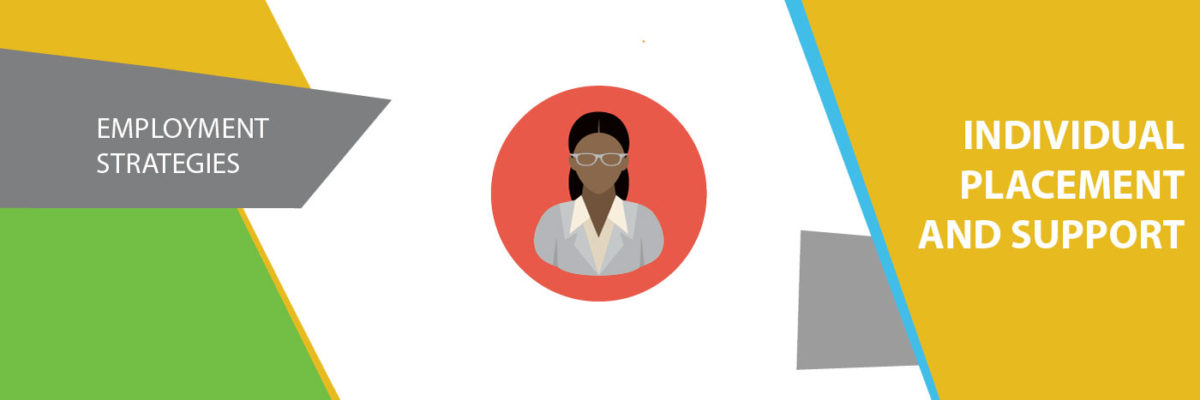What is Individual Placement and Support?
Individual Placement and Support is a supported employment model that gives people with mental illness the help needed to work successfully at competitive jobs. Competitive jobs are positions that are available to anyone which pay at least minimum wage. It is a federally recognized evidence-based practice.
Why is it Needed?
Research has shown that with the right type and amount of support, people with mental illness can work successfully. However, for many, the support needed has not been available so employment rates for people with mental illness are low.
Integrating people with mental health disabilities into the competitive workplace brings benefits both to the worker and the community, resulting in:
How Does it Work?
The Individual Placement and Support approach makes getting the job the start of the process rather than the end point. Individuals receive support based on their individual job needs, abilities, and interests. Employment specialists may also provide support to employers in line with the individual’s wishes.
As soon as participants say they want to go to work, an employment service provider works with them to identify their strengths, preferences, and abilities. The important thing is the person’s desire to work! No one is turned away because of past work history, illness history, substance use, symptoms, or other characteristics. Anyone with a mental illness who wants to work can use this approach. Whether the person wants part-time or full-time employment, the goal is a job that pays at least minimum wage and is competitive.
The other key ingredient to the Individual Placement and Support model is the integration of the employment services team with the person’s mental health support team. Mental health information is part of the employment plan, and employment goals are part of the mental health treatment plans.
The main components of the Individual Placement and Support model are:
Tips for Success
The employment specialist makes sure that before starting a job, the job seeker gets help from a benefits specialist to understand the financial and healthcare benefits they are currently receiving. Other supports may include help with the interview or preparing for the interview, whether or not to disclose information about the disability, meeting with the employer, and more.
Job supports are provided as long as they are needed. The supports can be provided on the job or outside of the job. The level and type of supports can change or fade away as the person’s needs change.

Want to know more about how this employment strategy can be incorporated into your work? Check out these resources:

Featured Training
Watch webcasts to gain valuable information that will help improve employment outcomes and quality of employment for people you serve.

Selected Tools and Resources
These tools and resources offer information to support your practice.

Best Practices/Research
Project E3’s research summaries provide an “At-a-Glance” overview the latest research findings, as well as recommendations for best practices and how to incorporate them in your work.

Strategy Use in Targeted Communities
Several Project E3 Communities used this strategy to improve employment outcomes for their most underserved populations. They include:

